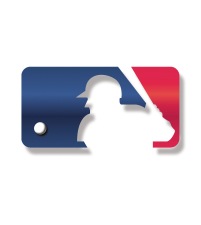 Major League Baseball and the MLB Players Association held a joint press conference on Tuesday to announce details of a new ‘labor agreement’.
Major League Baseball and the MLB Players Association held a joint press conference on Tuesday to announce details of a new ‘labor agreement’.
The major North American sports all have their employment and competition rules created via Collective Bargaining Agreements between the governing body of each sport and the respective players’ union.Â
MLB’s current agreement expires on 11 December this year and baseball fans can brief a sigh of relief that the sport is not having to go through the trials and tribulations experienced recently in the NHL, NFL and the ongoing NBA lockout, which is threatening the upcoming basketball season.
MLB’s new five-year deal still needs to be finalized, but everything is in place for a seamless transition to the new agreement.
Most of the headline details of the agreement were already known before today:
- The Houston Astros are moving to the American League West in 2013, allowing MLB to be structured into six divisions each containing five teams.
- As there will be 15 teams in each league from 2013, interleague play will be in operation for the whole year rather than simply at set periods.
- The postseason will be increased from eight teams to ten. There will be two Wild Card places in each league, with everything pointing to the Wild Cards facing each other in a single ‘play-in’ game. MLB Commissioner Bud Selig confirmed in the press conference that he wants to introduce this in 2012, but this is still to be agreed.
- MLB’s drug-testing programme will be expanded to include tests for hGH.
- Limits are being placed on the money that teams can spend on the amateur draft, with teams facing stiff penalties if they exceed them.
- Players outside of the U.S. and under the age of 23 will no longer be free agents available to sign for whoever they like. They will be subject to a more formalized process, most likely an international draft. As with the amateur player draft, a team’s spending on international talent will be subject to limits with penalties being in place if a team exceeds them.
These are joined by many changes to key parts of the MLB landscape such as revenue sharing, the competitive balance tax, salary arbitration and free agency.Â
Much of the early reaction has focused on the restrictions being placed on teams in respect of spending on amateur and international talent. In recent years, small market teams such as the Pittsburgh Pirates have allocated substantial sums in this direction, reasoning that the money was better spent on developing potential stars for the future than average Major Leaguers for the present.Â
There is also a fear that talented athletes playing more than one sport in North America will be lost to baseball in favour of grid iron or basketball college scholarships if teams can’t offer substantial signing bonuses.
At first glance it does look like smaller-market teams will be hurt by those changes, but we have to look at the whole new agreement in the round, rather than picking out separate parts.Â
Some small market teams have spent heavily on amateur talent to take advantage of the current system, yet in future it may be there are other opportunities for them to take advantage of, and it might not be necessary for them to spend such huge sums to gain that premium young talent in the first place.
Of course, you then have to consider the impact on the amateur talent. Even if the very best players still receive a decent sum, those lower down the pecking order are likely to feel the pinch.
We’ll have to wait and see how all of the changes play out over the next few years before we can really judge their impact.
Many writers will be picking apart the new agreement over the next couple of days, but there are a couple of points worth picking up here in the European/International context.
Changes to the process of acquiring international talent will affect European players, of course. The exact process has not yet been agreed, with the press release stating “by December 15, 2011, the parties will form an International Talent Committee to discuss the development and acquisition of international players, including the potential inclusion of international amateur players in a draft or in multiple draftsâ€.
Players will have to register with the Scouting Bureau to be eligible to sign with a team and the level of their signing bonus, whether it turns out to be a draft signing bonus or not, will be affected by the spending limits that teams will be under. Depending on how those limits are set, it may be a while before we see another deal similar to when the Minnesota Twins gave 16 year old German outfielder Max Kepler-Rozycki an $850,000 signing bonus in 2009.
The other ‘international’ highlight in the press release is featured in the ‘Other’ section at the end. Part (d) states “the parties will agree upon a comprehensive international play plan in which Clubs and Player will visit countries in which games have not been staged in the pastâ€. Again, we don’t know any further details about what that will actually entail, but it’s good to see another firm commitment to promoting the sport in new countries.
I’ll be taking a closer look at some of the other parts of the new agreement in the coming days, as well as starting to plan some substantial changes to some of my Baseball Basics for Brits articles.

